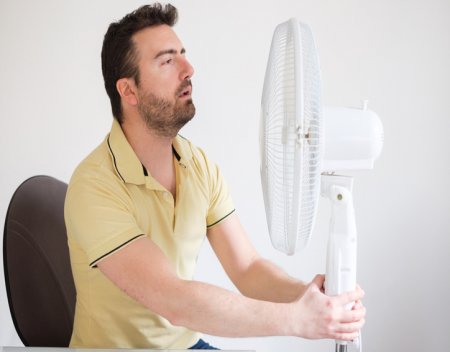Blog Categories
- Appliances Four
- Athletic Seating
- Auto Helpers
- Automated Stock Rooms
- Chocolate Four
- CuraFlo
- Damaged Goods Dating
- Flood Insurance Four
- Game Addict
- Hi Tech Pest Control
- HVAC Four
- Medical Labels Four
- Mental Health Four
- National CWS
- Promotional Ideas
- Seguros Lara Insurance
- Stem Cell Worx
- The Hidden Truth
- The Last Refuge
- The Mozilla Blog
- Video Editing Four
- Web Design Dev
- Website Development Four
- Windows Blog
Dealing with Humid Indoor Air

Having excess moisture in your home leads to damage and encourages harmful mold and mildew growth. Find out how you can reduce moisture at home and prevent the problems it causes by reading this week’s blog! INDOOR HUMIDITY AND MOISTURE Humid air contacts a cool surface while moisture condenses into water droplets when warm. Daily activities such as bathing, cooking, dishwashing, and clothes drying all add moisture to the air. Some heating appliances like unvented kerosene or natural gas models also increase the moisture inside the home. During winter, walls, doors, and windows that lack proper insulation are the most common surfaces that are cool, while uninsulated cold-water pipes are examples of cool surfaces during summer. Droplets may accumulate on these surfaces and can run down into the windows, walls and other structural components. Once they do, it can cause rotting, peeling of paint, and providing a good environment for the growth of mold and mildew. How Can Indoor Moisture Be Controlled? Once you see moisture accumulating, be sure to dry it promptly and deal with the source of the issue. There are two basic elements when controlling moisture buildup: a.) minimizing cool surfaces and b.) reducing humidity. Windows and storm doors minimize cool surfaces during winter by separating the interiors of your home from cold, outdoor air. Double- and triple-pane windows also help insulate interior glass from the cold. In addition to reducing moisture, adding such improvements makes your home more energy-efficient all year-round. Be sure to pay attention to your window treatments, too. Opening blinds and drapes during winter allow warmth to reach the interior glass. Although some condensation might occur, the improved circulation will make it less likely to accumulate. When you insulate cold-water pipes, you are also eliminating the common cool surfaces during the warmer months. Both angled and straight sleeves let you fit insulation to your pipes – you just have to slide on the sleeves and seal the joints and slits with duct tape. Heating and cooling systems also help control moisture in the home. For instance, electric and gas furnaces reduce humidity with dry heat. Air conditioning can also help lower the moisture level in the air as it cools. Make sure to have your HVAC units maintained regularly to avoid problems. Here are some simpler ways you can reduce air moisture: *Leaving room doors open to allow good air circulation throughout the different parts of the home; *Covering pots while cooking as much as possible; *Covering aquariums if you have any; *Storing firewood outside. For any concerns about humidity and moisture in your home, our HVAC experts can help you improve your indoor air quality. Reach out to us today for more information!
Re Posted From: Dealing with Humid Indoor Air

Having excess moisture in your home leads to damage and encourages harmful mold and mildew growth. Find out how you can reduce moisture at home and prevent the problems it causes by reading this week’s blog! INDOOR HUMIDITY AND MOISTURE Humid air contacts a cool surface while moisture condenses into water droplets when warm. Daily activities such as bathing, cooking, dishwashing, and clothes drying all add moisture to the air. Some heating appliances like unvented kerosene or natural gas models also increase the moisture inside the home. During winter, walls, doors, and windows that lack proper insulation are the most common surfaces that are cool, while uninsulated cold-water pipes are examples of cool surfaces during summer. Droplets may accumulate on these surfaces and can run down into the windows, walls and other structural components. Once they do, it can cause rotting, peeling of paint, and providing a good environment for the growth of mold and mildew. How Can Indoor Moisture Be Controlled? Once you see moisture accumulating, be sure to dry it promptly and deal with the source of the issue. There are two basic elements when controlling moisture buildup: a.) minimizing cool surfaces and b.) reducing humidity. Windows and storm doors minimize cool surfaces during winter by separating the interiors of your home from cold, outdoor air. Double- and triple-pane windows also help insulate interior glass from the cold. In addition to reducing moisture, adding such improvements makes your home more energy-efficient all year-round. Be sure to pay attention to your window treatments, too. Opening blinds and drapes during winter allow warmth to reach the interior glass. Although some condensation might occur, the improved circulation will make it less likely to accumulate. When you insulate cold-water pipes, you are also eliminating the common cool surfaces during the warmer months. Both angled and straight sleeves let you fit insulation to your pipes – you just have to slide on the sleeves and seal the joints and slits with duct tape. Heating and cooling systems also help control moisture in the home. For instance, electric and gas furnaces reduce humidity with dry heat. Air conditioning can also help lower the moisture level in the air as it cools. Make sure to have your HVAC units maintained regularly to avoid problems. Here are some simpler ways you can reduce air moisture: *Leaving room doors open to allow good air circulation throughout the different parts of the home; *Covering pots while cooking as much as possible; *Covering aquariums if you have any; *Storing firewood outside. For any concerns about humidity and moisture in your home, our HVAC experts can help you improve your indoor air quality. Reach out to us today for more information!
Re Posted From: Dealing with Humid Indoor Air

